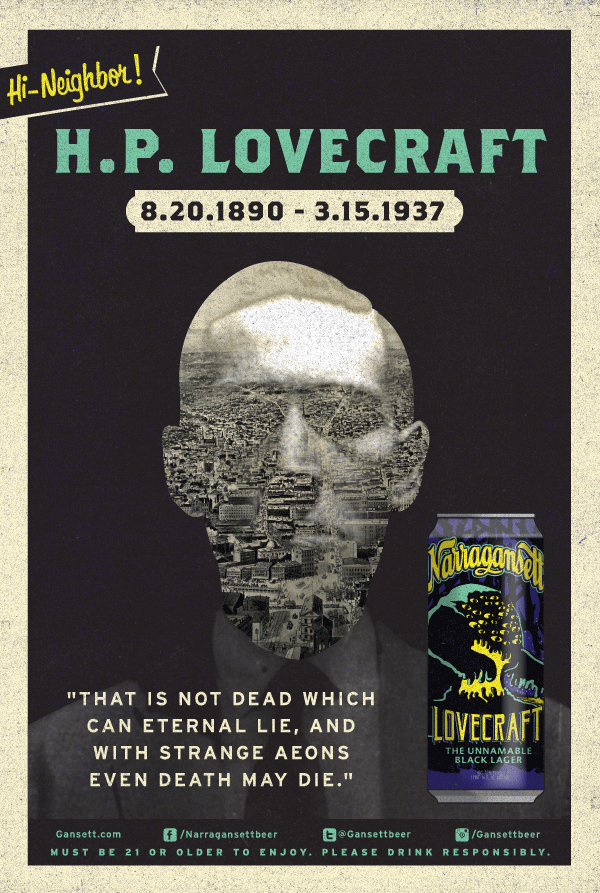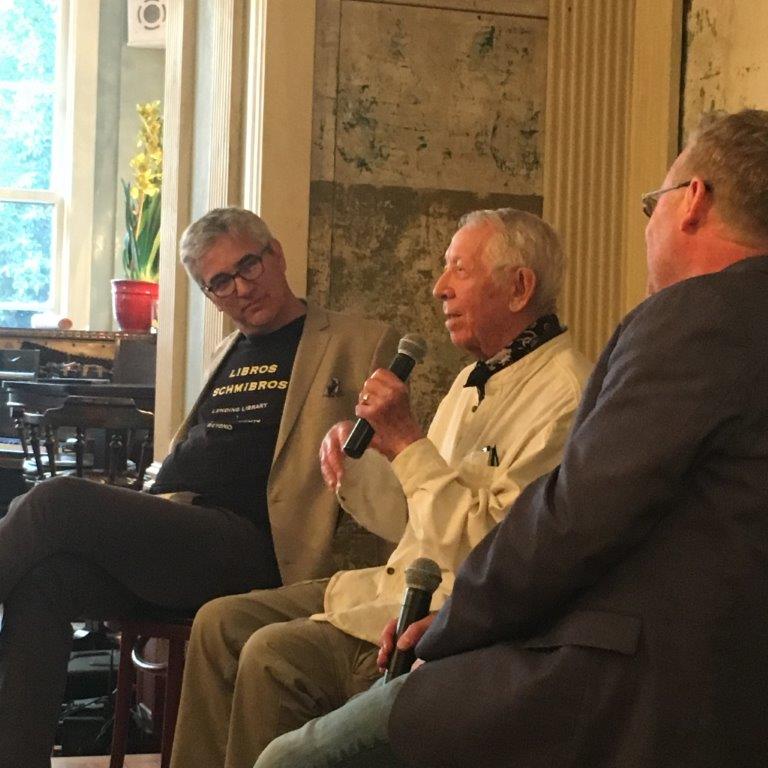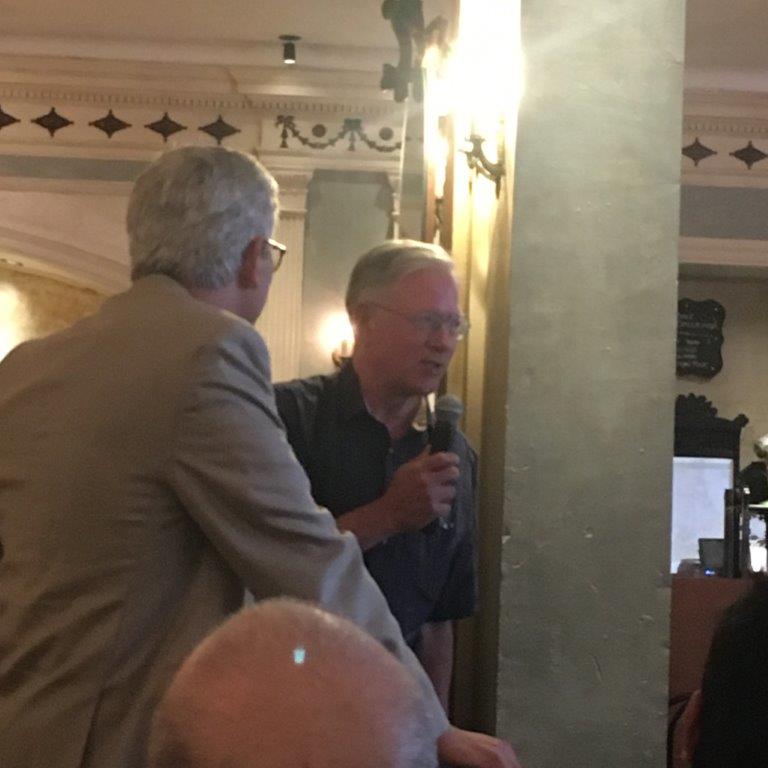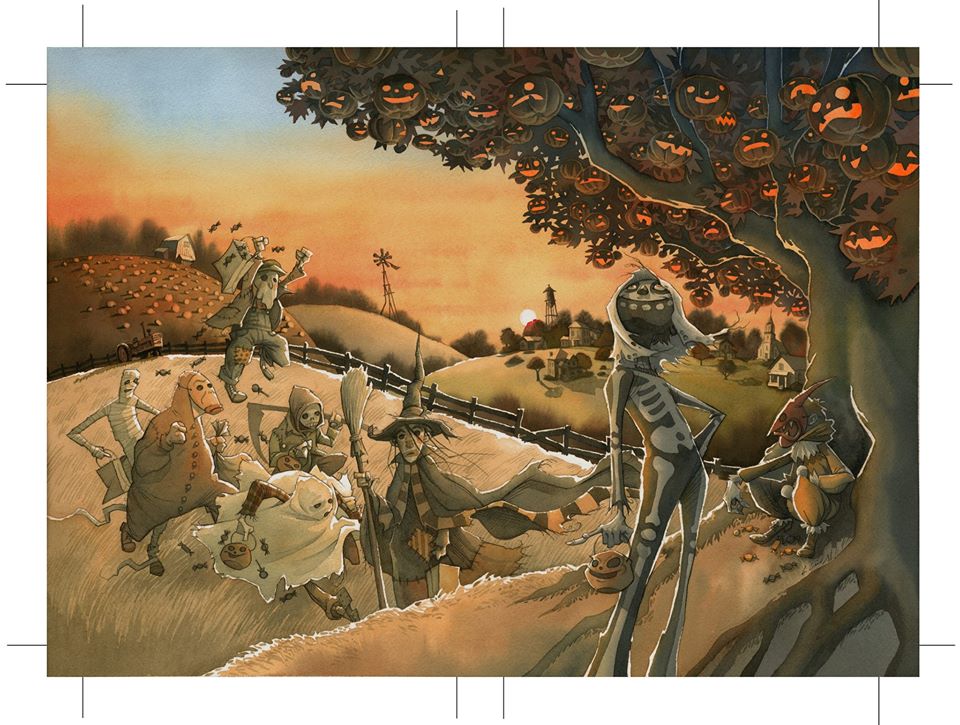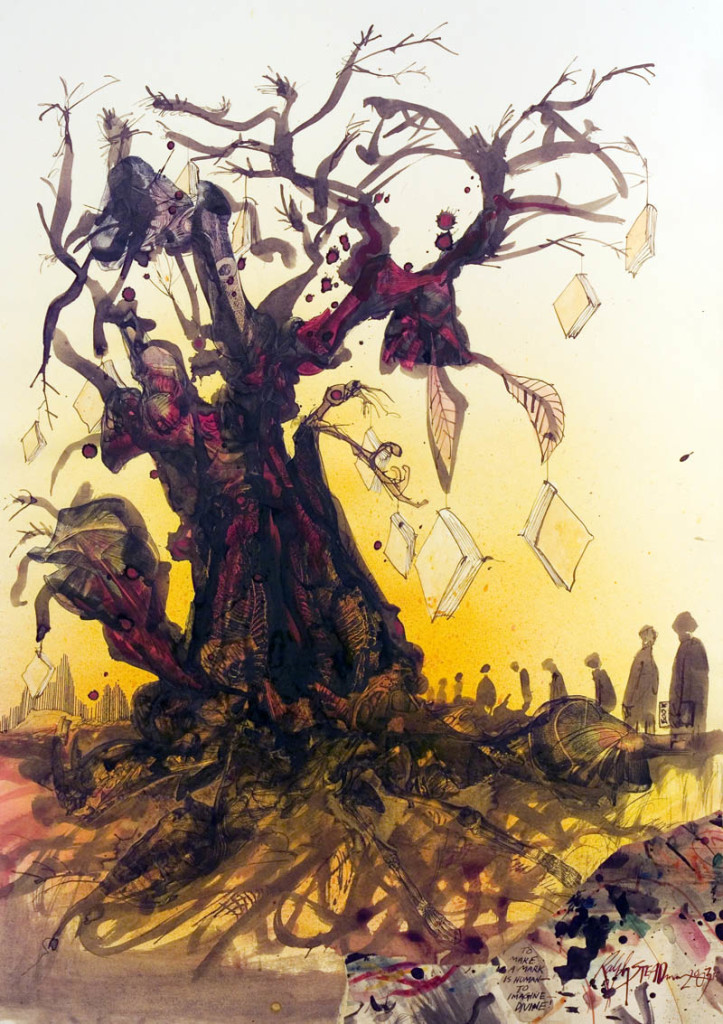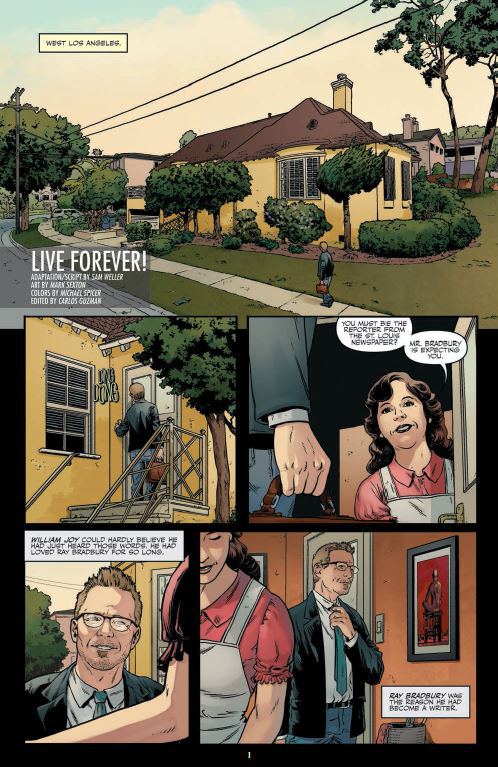(1) BEST OF TED. Ideas.Ted.com. features Nnedi Okorafor: “’Write your story, and don’t be afraid to write it’ — a sci-fi writer talks about finding her voice and being a superhero”.
During family visits to Nigeria in the 1990s and 2000s, Okorafor was fascinated by the harmony between traditional belief systems and brand-new electronic devices. “I started noticing the use and the interplay of technology in Nigerian communities, especially when cell phones came around,” she says. “I saw phones popping up in the most remote places, and they were normalized in really cool ways.” She wondered why stories didn’t depict technology in African nations. In fact, she began to wonder why she wasn’t writing such stories herself.
In college, however, Okorafor found herself discouraged from writing science fiction. “I had professors who were constantly telling me, ‘You’re such a good writer; you want to stay away from all of that weird stuff,’” she remembers. “Eventually I just kind of jumped the rails, because I couldn’t help it.” Okorafor dove headfirst into creating the stories she never found on library shelves growing up — ones with strong female protagonists of color, African locations, speculative technology, aliens and magic, as well as complex and relevant social themes like racial identity and gender violence.
(2) A VISION OF THE FUTURE. Ray Bradbury biographer Sam Weller blasts a proposal to raze Waukegan’s old Carnegie Library building:
And this is why Charles Selle’s ridiculous call to “raze the edifice” of Waukegan, Illinois’ historic 1903 Carnegie Library building is short-sighted and, frankly, emblematic of Waukegan’s frustrating inability to capitalize on its own crown jewel lakefront location and its remarkable history. Cities large and small across the nation are embracing historic revitalization and renovation, attracting artists and entrepreneurs, restaurateurs and urban visionaries who see the connection to the past and the future. Selle’s assertion that the city is “hanging on to the past” with the long-abandoned Carnegie building is correct. Yet he misses the point entirely. Waukegan should hang on to its past. Selle doesn’t even propose a replacement suggestion for the location, instead only calling for the complete demolition of a building with landmark status. The fact of the matter is that the current plans to house the Ray Bradbury Experience Museum in the Carnegie is the best chance to renovate the old biblio-gem, to raise the needed funding, and to properly honor one of the world’s great, inspiring imaginations….
(3) OUT OF THE LINEUP. With Wendig gone, the Shadow of Vader comic has been sidelined, says The Hollywood Reporter — “Marvel Pulls Fired Writer Chuck Wendig’s ‘Shadow of Vader’ Series From Schedule”.
Marvel Entertainment released the official list of January 2019 comic book product this week, and one title was notable by its absence: Shadow of Vader, the five-issue comic book series written by Chuck Wendig, the writer Marvel fired last week because of his social media use.
(4) EREWHON BOOKS BEGINS. Tor.com boosted one of its editors’ new company: “Hugo Award-Winning Editor Liz Gorinsky Launches New Publishing Company Erewhon Books”.
(5) UPTOWN SPOT. Ed Green worked as a background actor on the Bruno Mars “Uptown Funk” music video – it’s good thing he got the gig before this new generation of robots came along!
(6) IN PRAISE OF FAMOUS MEN. Except in Slate, this praise is intended satirically — “In Defense of Soylent Green Inventor Henry C. Santini”.
On October 16, 2018, Popular Mechanics published a deeply weird tribute to mercurial industrialist Elon Musk, in which a carefully-curated group of technology journalists and Musk’s fellow rich people praised him for trying, regardless of what he was trying to do, whether or not he succeeded, or the methods he used to pursue his goals. One writer compared him at length to Mark Twain!
On October 16, 2022, NYPD detective Frank Thorn discovered that Soylent Green was made of people. The ensuing public scandal threatened the reputation of Henry C. Santini, the Governor of New York and a board member of both Holcox Manufacturing of Norfolk, Virginia and its parent company, the New-York-based Soylent Corporation.
On October 17, 2022, Slate sprang into action.
He is under attack. For saying the wrong thing, for not making enough Soylent Green, for creating a global manufacturing pipeline based on baking human corpses into little green crackers and telling people they’re made out of plankton. Some of the criticisms have merit. Much of it is myopic and small-brained, from sideline observers gleefully salivating at the opportunity to take him down a peg and maybe score a few extra rations in the process. But what have these anti-cannibalism activists and pontificators done for humanity?
Henry Santini is an engineer at heart, a tinkerer, a problem-solver, a genius at disguising the taste of human flesh—the kind of person Slate has always championed—and the problems he’s trying to solve are hard. Really hard. He could find better ways to spend his money, that’s for sure….
(7) HONEST TRAILERS. These YouTubers bid you “Return to the MCU franchise that makes you say ‘sure’ – It’s Ant-Man and The Wasp.”
(8) PUTTING AWAY THE FEATHERS. Variety has the story — “‘Sesame Street’ Puppeteer Caroll Spinney Retires From Big Bird, Oscar the Grouch Roles”.
Caroll Spinney has been a television mainstay since 1969, but his face has rarely made an appearance.
Disguised beneath a frock of bright yellow feathers and an orange bill, the “Sesame Street” puppeteer was the heart and soul behind Big Bird and Oscar the Grouch since the show’s premiere almost 50 years ago.
Now, at the age of 84, Spinney told the New York Times that he is retiring from “Sesame Street” after nearly half a century playing some of the show’s most iconic characters. Come Thursday, Spinney will enter the “Sesame Street” studios in Astoria, Queens for the last time before leaving the roles behind forever.
(9) TODAY IN DUCK HISTORY
- October 17, 1937 — Huey, Dewey, and Louie first appeared in a comic strip.
(10) TODAY’S BIRTHDAYS.
[Compiled by Cat Eldridge and JJ.]
- Born October 17, 1914 – Jerry Siegel, Comic Book Writer who also used pseudonyms including Joe Carter and Jerry Ess. His first foray into genre was as editor of a 5-issue fanzine called Science Fiction. He was co-creator of the Superman character, along with Joe Shuster. They started off selling stories to National Allied Publications, the original precursor of DC Comics, and sold the Superman character to Detective Comics, Inc., yet another forerunner of DC. His contentious career with DC and elsewhere is far too long to detail here; suffice it to say that if you’ve read comics, you’ve likely encountered some of his characters. He was inducted posthumously, with Shuster, into the Will Eisner Comic Book Hall of Fame and the Jack Kirby Hall of Fame.
- Born October 17, 1917 – Marsha Hunt, 101, Actor and Singer whose career was hampered by blacklisting during the McCarthy era. She had guest roles on the original versions of Alfred Hitchcock Presents, The Twilight Zone, and The Outer Limits, as well as on Star Trek: The Next Generation, Shadow Chasers, and the TV movie Fear No Evil. She has spent decades doing humanitarian work to fight poverty, starvation, homelessness, and mental illness.
- Born October 17, 1922 – George Hay (Oswyn Robert Tregonwell), Writer, Editor, Conrunner, and Fan from the UK who served on convention committees and helped establish the Science Fiction Foundation in 1972. In addition to writing his own four novels, he co-edited the first 6 issues of the long-running Foundation: The Review of Science Fiction, edited several anthologies, and his fanzines included Realtime and Door Into George. He co-edited two volumes of The John W. Campbell Letters, the first of which was a finalist for a Hugo for Best Nonfiction Work. Named after him is the George Hay Memorial Lecture, an annual program item at Eastercon (the UK Natcon) in which an invited speaker, often a prominent British scientist, gives a talk on a scientific topic.
- Born October 17, 1933 – William Anders, 85, Engineer and Astronaut, who was one of the first three persons to leave low Earth orbit and travel to the Moon in Apollo 8 along with fellow astronauts Frank Borman and Jim Lovell. The famous photograph Earthrise was taken by him. His foundation created the Heritage Flight Museum in Washington state; he serves as its President and until 2008 was an active participant in its air shows (his career includes more than 8,000 hours of flight time). The Anders crater on the Moon is named in his honor.
- Born October 17, 1934 – Alan Garner, 84, Writer from England who is best known for his children’s fantasy novels and his retellings of traditional British folk tales. However, at least two of his novels, Boneland and Thursbitch, are decidedly adult in language and complexity in their storytelling. I strongly recommend both of them for Autumnal reading. His novel The Owl Service received the Carnegie Medal, and he has been recognized with British Fantasy Awards’ Karl Edward Wagner Award for contributions to genre, and with the World Fantasy Award for Life Achievement, as well as Guest of Honor at World Fantasy Convention.
- Born October 17, 1946 – Bruce McAllister, 72, Writer, Editor, Teacher, and Poet of mainly short fiction whose novelette “Dream Baby”, about a Vietnam War nurse who can foresee which soldiers will die in battle, was nominated for Hugo and Nebula Awards, and was later expanded into a novel which was a Locus Award finalist. Other stories have garnered another Hugo nomination and a Shirley Jackson nomination. As a 16-year-old, he sent a survey to 150 well-known science fiction authors, asking them about symbolism in their work, and whether it was conscious or unconscious, intentional or the invention of readers – and received responses from half of them, ranging from an admin assistant’s blow-off to a thick packet of single-spaced typescript.
- Born October 17, 1948 – Margot Kidder, Actor and Producer who is best known to genre fans as Lois Lane from Christopher Reeve’s Superman films. Other movie roles included The Reincarnation of Peter Proud, The Amityville Horror, and Halloween II, and guest parts in episodes of The (new) Outer Limits, Tales from the Crypt, Earth: Final Conflict, The Hitchhiker, and – most appropriately – Smallville. She struggled with health issues and bipolar disorder for decades, but in recent years had maintained steady work in numerous independent films and TV roles; sadly, she succumbed to an overdose of alcohol and painkillers in May of this year.
- Born October 17, 1948 – Robert Jordan (James Oliver Rigney, Jr.), Writer who started out in the 80s writing Conan pastiche novels as well as westerns and historical novels, but who struck gold in the 90s with his Wheel of Time series. The novels were massively popular with fans; his series spawned an ardent Usenet forum community who called themselves Darkfriends and who later built an extensive internet resource at Dragonmount.com (what would now be considered a fandom wiki), inspired the Jordancon annual convention of devotees, and sold millions of copies. In the mid-2000s, he revealed that he had been diagnosed with a terminal illness, but continued to work on plot notes for the completion of the WoT series until his death. His widow, Tor editor Harriet McDougal, personally chose author Brandon Sanderson to complete the series using Jordan’s notes, and after the final three volumes were published, the entire series was nominated by Hugo voters for Best Novel. He was Guest of Honor at numerous conventions, and was posthumously given the Phoenix Award for Lifetime Achievement by Southern Fandom.
- Born October 17, 1950 – Michael J. Walsh, 68, Publisher, Conrunner, and Fan who found fandom at the age of 17 and became involved in running conventions; he chaired numerous Disclave, Capclave, Balticon, and World Fantasy Conventions, as well as the notoriously-insolvent 1983 Worldcon. He is a member of the Washington Science Fiction Association, and has held a number of offices in that organization in addition to starting WSFA Press, which publishes special editions of works by Disclave and Capclave Guests of Honor. In 1993, he founded Old Earth Books, which publishes niche editions and reprints of out-of-print works, and which received a Special World Fantasy Award for its collections of Howard Waldrop’s short fiction; and he has been Guest of Honor at several conventions.
- Born October 17, 1956 – Dr. Mae C. Jemison, 62, Physician, Engineer, and Astronaut who was a member of NASA’s eight-day 50th Space Shuttle mission in 1992, beginning each shift with the words “Hailing frequencies open” in honor of Nichelle Nichols, the Star Trek actor who inspired her to become an astronaut. The following year she left NASA to found her own company to promote STEM education to young people; her company won the bid for the joint DARPA and NASA 100 Year Starship Project to create a business plan that can last 100 years in order to help foster the research needed for interstellar travel. Jemison had a cameo on an episode of Star Trek: The Next Generation, and served as technical consultant for the current season of National Geographic’s drama series Mars (which – hey! is available in the U.S. via online streaming… BRB in about 6 hours). She was immortalized last year in LEGO’s Women of NASA minifigure set.
- Born October 17, 1958 – Jo Fletcher, 60, Journalist, Writer, Editor, Critic, Poet, and Publisher from the UK who became involved in fandom at the age of 20, contributing to, and later editing, the British Fantasy Society’s Bulletin and attending conventions. Eventually she wound up running the British Fantasy Society with editor Stephen Jones, chairing Fantasycon (the British Fantasy Convention) and the first World Fantasy Convention held outside of North America, and serving on the boards of the WFA and WHA. After 16 years of running Orion’s Gollancz SFF imprint, including its SF Masterworks and Fantasy Masterworks lines, in 2011 she started her own imprint under Quercus; as ample demonstration of her acumen, Jo Fletcher Books published Robert Jackson Bennett’s Hugo-nominated Divine Cities trilogy. She’s been Guest of Honor at FantasyCon and WFC, has been recognized with the BFA’s Karl Edward Wagner Award for her contributions to genre and the BFS, and was given a special World Fantasy Award for Gollancz’ Fantasy Masterworks series.
- Born October 17, 1971 – Patrick Ness, 47, Writer, Journalist, and Producer who emigrated from the U.S. to England. He is best known for his books for young adults, including the Chaos Walking trilogy, the novels of which received a Tiptree Award, a Carnegie Medal, and a Clarke Award nomination, and were adapted into a movie which will be out next March. His novel A Monster Calls won a Carnegie Medal and was nominated for a Stoker Award and the Prix Imaginaire; he adapted it into a movie which was nominated for a Saturn Award. He also wrote and produced the Doctor Who spinoff series Class, about a group of teenagers dealing with time travel and aliens.
- Born October 17, 1983 – Felicity Jones, 35, Actor from England who gained genre fame, and a Saturn nomination, starring in the Star Wars film Rogue One, which won a Saturn Award and was a Hugo finalist for Best Dramatic Presentation; she reprised that role in the animated Star Wars: Forces of Destiny series. Other genre appearances include an Oscar-nominated lead role in the Stephen Hawking docudrama The Theory of Everything, the Saturn-nominated film adaptation of Ness’ A Monster Calls, The Amazing Spider-Man 2, and Inferno, a main role in the TV series The Worst Witch and its sequel series Weirdsister College, and an episode of Doctor Who. She has a lead role in next year’s The Aeronauts, a fictionalized version of the story of the hot air balloon pilot and the scientist who, in 1862, set a still-standing record for ascending 7 miles up in the atmosphere.
- Born October 17, 1984 – Randall Munroe, 34, Engineer, Writer, and Cartoonist who has become famous for his webcomic xkcd, which frequently has panels relating to science, genre fiction, and other items of genre interest – including the Filer favorite Today’s Lucky 10,000. His 2015 book Thing Explainer explains concepts using only the 1,000 most common English words. He was twice a finalist for the Best Fan Artist Hugo, and his animated graphic sequence Time won a Hugo for Best Graphic Novel.
(11) COMICS SECTION.
- FoxTrot TIEs one on.
(12) PROBLEMS WITH NOCTURNAL READER’S BOX. Jason Sanford shares a free report from his Patreon: “Publisher files suit against Nocturnal Reader’s Box, alleges $100,000 in books from multiple genre presses are missing”.
Nocturnal Reader’s Box (NRB), a “subscription box service shipping horror-themed books and merchandise for the price of $35 per month,” shut down in September. According to Bleeding Cool, the service run by the husband and wife team of Jessica and Vincent Guerrero was the “subject of numerous complaints about late or nonexistent shipping, changes to the company’s terms of service, missing or different-than-advertised items, and purportedly non-existent tracking numbers.”
The website for NRB currently states that “We’re temporarily closed!” Despite this, people online are alleging that NRB is still charging credit cards and that automatic renewal charges are still going through….
(13) VIEWED FROM THE INSIDE. Joseph Bentz answers the question “Why Is Writing So Hard?” — but as many books as he has out, you’d never suspect he had reason to ask!
Why do you need all those writers conferences to commiserate and moan about an activity—writing—that you supposedly love?
It’s a fair point, and yet, writers are very familiar with all those agonizing hours we spend squirming, staring at walls, searching for words, deleting words, and writing through drafts that won’t quite come together. Why such struggle?
I finally figured out why writing is so hard….
(14) FRANCOFILE. Adweek devotes an article to French company Cdiscount’s ad campaign — “These Outlandish Aliens Getting Ecommerce Deals Is the Spaciest of Oddities” – unfortunately, registration is required to read it.
The animated space creatures featured in Cdiscount’s latest campaign are absolutely over the moon about the French ecommerce site.
Thanks to YouTube you can see the ad – and if you speak French, even understand it!
(15) LEGACY. Vice’s Motherboard website explains how “How Paul Allen Saved the American Search for Extraterrestrial Intelligence” by donating money to the effort.
On Monday evening, Microsoft co-founder Paul Allen died of non-Hodgkin’s lymphoma at the age of 65. At the time of his death, Allen was the 47th richest person in the world, with a net worth of $26 billion. For the last few decades of his life, Allen used his wealth for a staggering variety of business and philanthropic interests. In addition to owning the Seattle Seahawks and the Portland Trail Blazers, Allen founded a brain science institute, an AI institute, and Stratolaunch Systems, which was exploring private spaceflight.
Yet one of the research areas where Allen made the biggest impact was also the one he spoke about the least: the Search for Extraterrestrial Intelligence (SETI). Indeed, Allen almost single-handedly rescued American SETI by donating over $30 million to scientists scanning the cosmos for intelligent radio signals.
(16) BRIGHT IDEA? According to the People’s Daily Online, China plans to use a mirror satellite to provide outdoors nighttime illumination for the city of Chengdu—and real soon now (“Chengdu to launch ‘artificial moon’ in 2020”). The claim is that it will be several times brighter than a full moon over the city.
Southwestern China’s city of Chengdu plans to launch its illumination satellite, also known as the “artificial moon”, in 2020, according to Wu Chunfeng, chairman of Chengdu Aerospace Science and Technology Microelectronics System Research Institute Co., Ltd.
Wu made the remarks at a national mass innovation and entrepreneurship activity held in Chengdu on Oct. 10.
The illumination satellite is designed to complement the moon at night. Wu introduced that the brightness of the “artificial moon” is eight times that of the real moon, and will be bright enough to replace street lights.
…Some people expressed concern that the lights reflected from space could have adverse effects on the daily routine of certain animals and astronomical observation.
Kang Weimin, director of the Institute of Optics, School of Aerospace, Harbin Institute of Technology, explained that the light of the satellite is similar to a dusk-like glow, so it should not affect animals’ routines
(17) WAX ON. WAX OFF. Gizmodo’s io9 warns you, “Don’t Blink: Jodie Whittaker’s Doctor Who Wax Figure Is Watching You.”
That’s not a picture of Jodie Whittaker, Doctor Who’s new star, up there. Seriously. It’s a wax recreation so good that even the Nestene Consciousness itself would be a bit jealous of the handiwork behind it.
This frankly absurdly lifelike replica of Whittaker in her full 13th Doctor regalia is the work of a new Doctor Who experience at Madame Tussauds in Blackpool. Alongside the uncanny recreation of the actress, the experience includes one of the actual TARDIS props used during the filming of the 11th season of the show, as visitors are tasked with trawling a forest to hunt down the Doctor’s sonic screwdriver—retrieving it and bringing it back to its rightful, albeit waxy, owner.
(18) TROPE THEORY. The Fifth Element, Enchanted, Tron Legacy, My Stepmother Is an Alien, Sheena, Planet of the Apes, Stargate, Star Trek, Splash and other mermaid tales, even Forbidden Planet. The female characters in the movies and shows are what Pop Culture Detective labels “born sexy yesterday” and describes as a male fantasy trope. Occasionally, as in Star Man, the trope is in reverse.
(19) LIVE FROM 2007. For reasons that would take too long to explain I watched a lot of Commando Cody episodes before the start of LASFS meetings, so I especially enjoyed this parody of the classic serial –
[Thanks to JJ, John A Arkansawyer, Jason Sanford, Mike Kennedy, Chip Hitchcock, Martin Morse Wooster, John King Tarpinian, Cat Eldridge, Carl Slaughter, and Andrew Porter, for some of these stories, Title credit goes to File 770 contributing editor and earworm creator of the day bill.]



